#Anantaram
Text


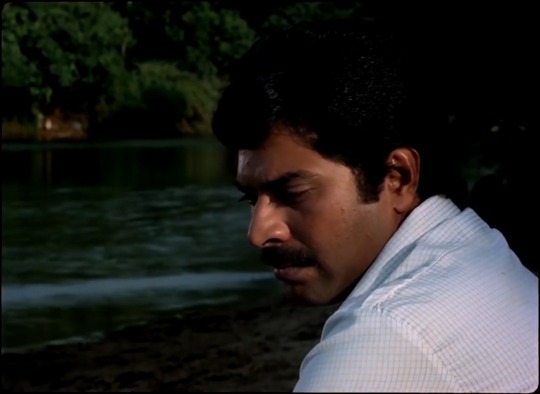
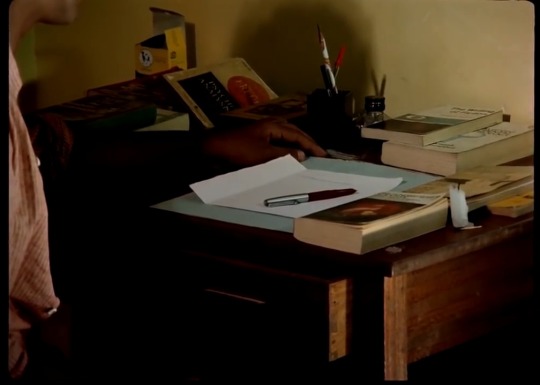


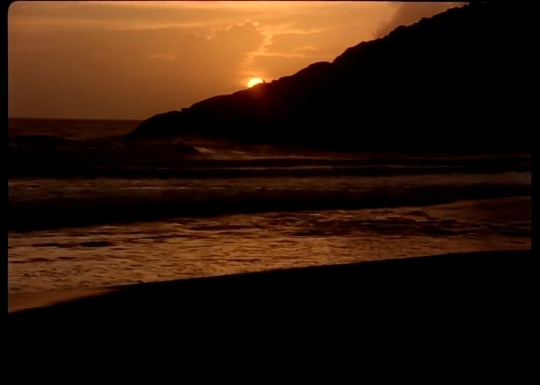

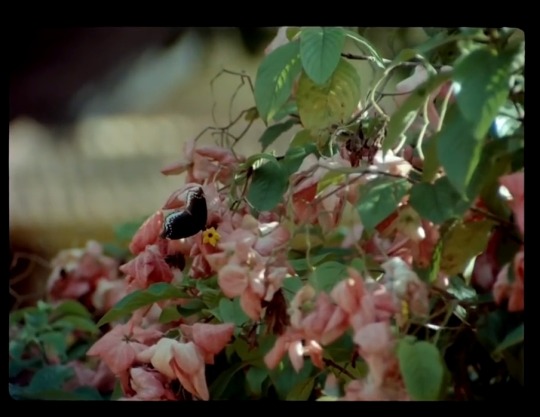

Anantaram [1987, dir. Adoor Gopalakrishnan]
Watch the full movie with subtitles here:
youtube
#Anantaram#malayalam cinema#1980s#vintage retro#indian cinema#south asian cinema#parallel cinema#arthouse films#psychological#Youtube
9 notes
·
View notes
Text
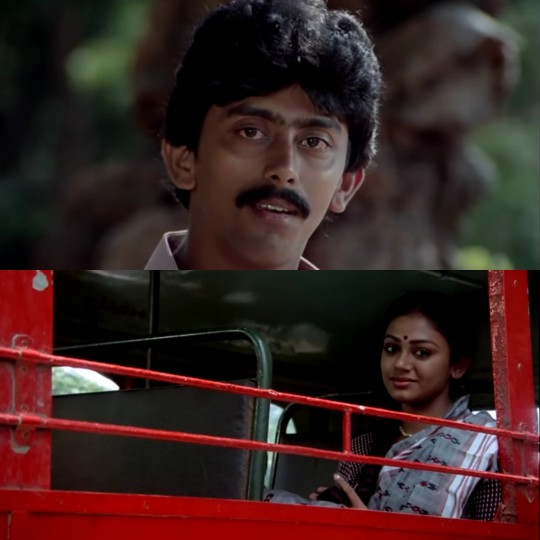
Ajayan & Nalini ❤️
1 note
·
View note
Text

Real Vision
welcome to Real Vision
July 06, 2022
# Welcome to Real Visitor Group
# company started 2 years 6 months back
# We have 9 Sits,
# we complete 5 Sits HMDA 💯 %,
# we have 50 Acres site HMDA complete 90% with in 8 months,
# We have 3 sits HMDA ( names :- royal avenue, silver County, Highway imperial ),
# This 3 sits complete 50%,
# We have 1 DTCP (name:- silver oak),
# we have Farmland ( name :- Nature Space),
# We are Have 20000 associate,
# We are Taking the sits also nearest to the village nearest to the highways nearest to the towns,
Call me this is RAIGIRI SHIVA KUMAR:8340828825

SITE WITH LAYOUT BIBI NAGAR
# Royal Avenue
# Nearest to the AIIMS
# Nearest to the highway
# Nearest to the railway station
# Backside of Hindu where company
# Manjera water tank
# Under dryness system
# CC roads
# Current polls
# Street lights
# 100 ft main road
# 40 ft and 30 ft roads in Site
# We have Vijayawada highway connectivity road
# Underground gas facility ( Reliance)
# layout in website http://183.82.54.218/RealvisionVGC/Layout/ViewImageStatus?VentureCD=RAV&SectorCD=GEN
Call me this is RAIGIRI SHIVA KUMAR:8340828825

BHONGIR SITE WITH LAYOUT
# HIGHWAY IMPERIAL
# Near to anantaram village
# 100 meters highway NH 136
# 200 meters to rinka alama temple
# 2 minutes Venkateswara Swamy temple( billing cost is around 250 crores single person building)
# 150 meters Vasavi engineering college and vanilla college
# 2 Km to bhongir
# 10 minutes yadagiri temple Gupta
# BRR INNER RING ROAD
# Beside the New functional
# Near railway hub
# inside CC roads
# underground drainage facility
2 notes
·
View notes
Text
శ్రీమద్భగవద్గీత - 481: 12వ అధ్., శ్లో 12 / Bhagavad-Gita - 481: Chap. 12, Ver. 12
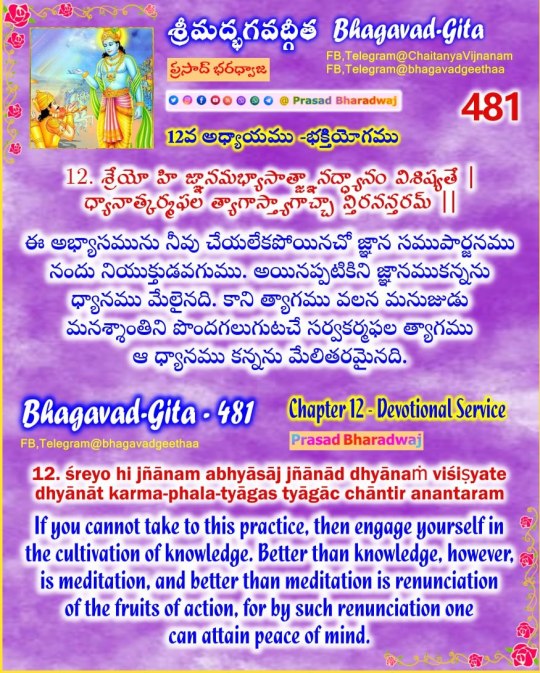
🌹. శ్రీమద్భగవద్గీత - 481 / Bhagavad-Gita - 481 🌹
✍️. శ్రీ ప్రభుపాద, 📚. ప్రసాద్ భరద్వాజ
🌴. 12వ అధ్యాయము -భక్తియోగము -12 🌴
12. శ్రేయో హి జ్ఞానమభ్యాసాత్జ్ఞానద్ధ్యానం విశిష్యతే |
ధ్యానాత్కర్మఫల త్యాగాస్త్యాగాచ్చా న్తిరనన్తరమ్ ||
🌷. తాత్పర్యం : ఈ అభ్యాసమును నీవు చేయలేకపోయినచో జ్ఞానసముపార్జనమునందు నియుక్తుడవగుము. అయినప్పటికిని జ్ఞానముకన్నను ధ్యానము మేలైనది. కాని త్యాగము వలన మనుజుడు మనశ్శాంతిని పొందగలుగుటచే సర్వకర్మఫల త్యాగము ఆ ధ్యానము కన్నను మేలితరమైనది.
🌷. భాష్యము : కడచిన శ్లోకములందు తెలుపబడినట్లు భక్తియుతసేవ రెండువిధములు. విధిపూర్వక నియమములు కలిగిన మార్గము ఒకటి కాగా, దేవదేవుని యెడ పూర్ణానురాగము కలిగిన మార్గము వేరొకటి. కృష్ణభక్తిభావన యందలి విధినియమములను వాస్తవముగా పాటింప జాలని వారు జ్ఞానసముపార్జన చేయుట ఉత్తమము. ఏలయన అట్టి జ్ఞానసముపార్జన ద్వారా మనుజుడు తన నిజస్థితిని అవగాహన చేసికొనగలడు. అట్టి జ్ఞానమును క్రమముగా ధ్యానముగా వృద్ధినొందగలదు. ధ్యానము ద్వారా మనుజుడు క్రమానుగతిని భగవానుని అవగతము చేసికొనగలుగును.
ఆత్మయే బ్రహ్మమును ఎరుకను కలిగించు కొన్ని విధానములు కలవు. భక్తియుక్తసేవలో నియుక్తుడగుటకు సమర్థుడు కానివానికి అటువంటి ధ్యానము ఉత్తమమైనది. ఒకవేళ మనుజుడు ఆ విధముగా ధ్యానము చేయలేనిచో వేదములందు బ్రాహ్మణులు, క్��త్రియులు, వైశ్యులు, శూద్రులకు విధింపబడిన విధ్యుక్తధర్మములను పాటింప వచ్చును. అట్టి వివిధవర్ణముల ధర్మములు భగవద్గీత యందలి అష్టాదశాధ్యాయమున వివరింప బడినవి. కాని ఈ అన్నిమార్గములందును మనుజుడు తన కర్మఫలమును త్యాగము చేయవలసి యున్నది. అనగా కర్మఫలమును ఏదియోనొక మంచి ప్రయోజనముకై వినియోగింప వలసి యుండును.
🌹 🌹 🌹 🌹 🌹
🌹 Bhagavad-Gita as It is - 481 🌹
✍️ Sri Prabhupada, 📚 Prasad Bharadwaj
🌴 Chapter 12 - Devotional Service - 12 🌴
12. śreyo hi jñānam abhyāsāj jñānād dhyānaṁ viśiṣyate
dhyānāt karma-phala-tyāgas tyāgāc chāntir anantaram
🌷 Translation : If you cannot take to this practice, then engage yourself in the cultivation of knowledge. Better than knowledge, however, is meditation, and better than meditation is renunciation of the fruits of action, for by such renunciation one can attain peace of mind.
🌹 Purport : If you cannot take to this practice, then engage yourself in the cultivation of knowledge. Better than knowledge, however, is meditation, and better than meditation is renunciation of the fruits of action, for by such renunciation one can attain peace of mind. As mentioned in the previous verses, there are two kinds of devotional service: the way of regulative principles and the way of full attachment in love to the Supreme Personality of Godhead. For those who are actually not able to follow the principles of Kṛṣṇa consciousness it is better to cultivate knowledge, because by knowledge one can be able to understand his real position. Gradually knowledge will develop to the point of meditation. By meditation one can be able to understand the Supreme Personality of Godhead by a gradual process.
In the cultivation of knowledge there are processes which make one understand that one himself is the Supreme, and that sort of meditation is preferred if one is unable to engage in devotional service. If one is not able to meditate in such a way, then there are prescribed duties, as enjoined in the Vedic literature, for the brāhmaṇas, kṣatriyas, vaiśyas and śūdras, which we shall find in the last chapter of Bhagavad-gītā. But in all cases, one should give up the result or fruits of labor; this means to employ the result of karma for some good cause. In summary, to reach the Supreme Personality of Godhead, the highest goal, there are two processes: one process is by gradual development, and the other process is direct.
🌹 🌹 🌹 🌹 🌹
1 note
·
View note
Text
what-kcr-has-done-for-the-people-of-the-state-should-be-said-sharmila
Jagityala:
flagged down CM KCR. Sharmila made these comments during the ongoing Praja Prasthanam Padayatra in Jagityala constituency. On the other hand, Sharmi received a warm welcome in Tippannapet, Polasa, Anantaram and Takkellapally villages. Speaking on this occasion, Sharmila accused YS Sharmila that KCR, who wanted nothing but movement during the Telangana movement, has now given posts to the entire family.
For more updates download the app now:
0 notes
Text
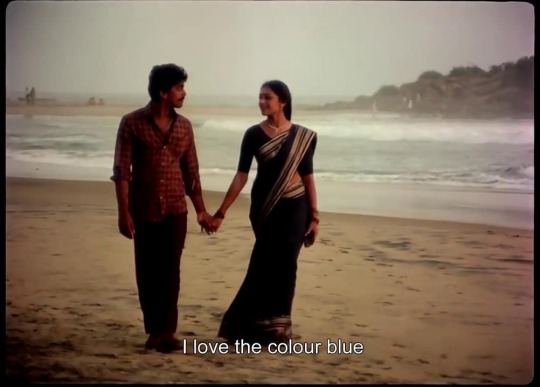
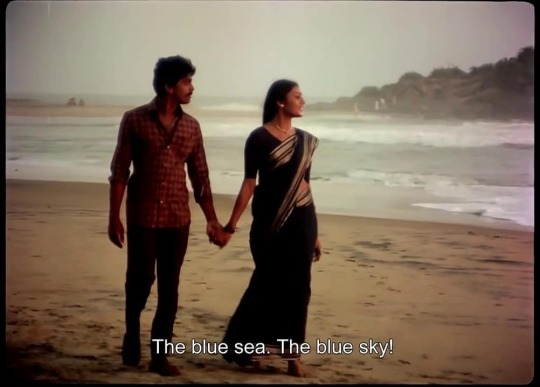
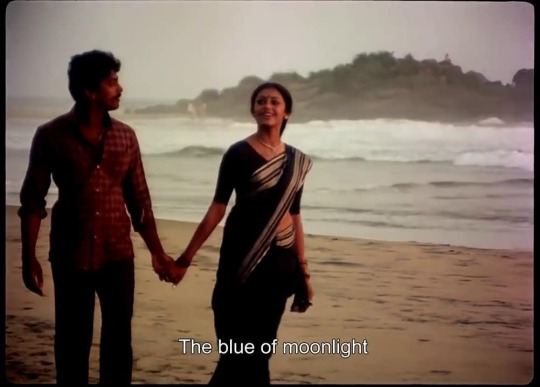
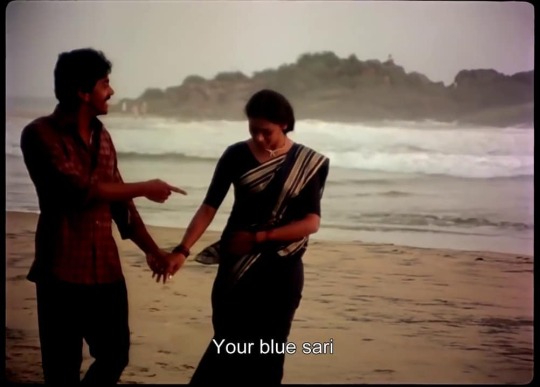



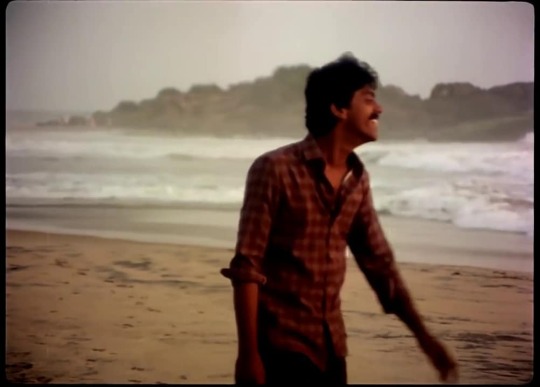
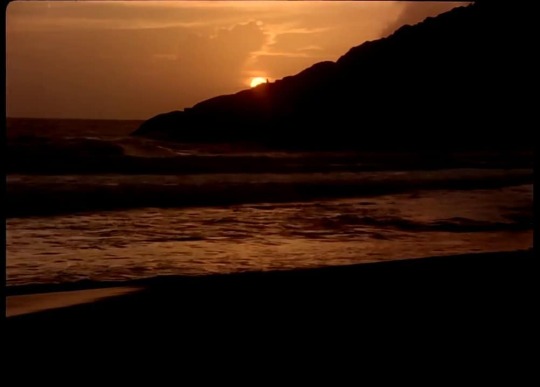

Anantaram (1987), dir. Adoor Gopalakrishnan
#anantaram#adoor gopalakrishnan#indian cinema#Malayalam cinema#shobhana#ashokan#film#evening#🌟#neel#upl#thatindiancinephile
600 notes
·
View notes
Text

A film with multiple fragile layers.

Takes you on a trip. One you might not want to return from.
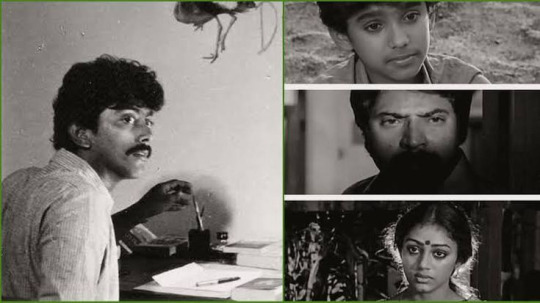
Presents fantastic performance by some talented child actors.
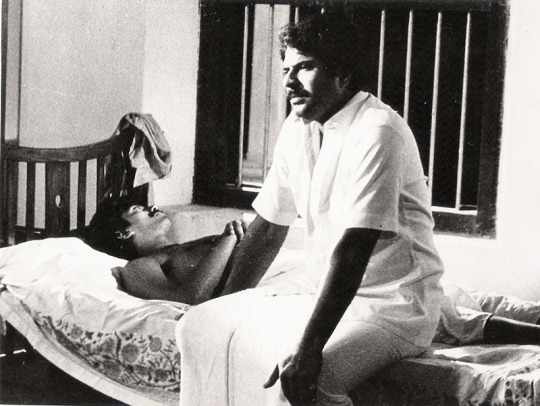
First person narration. Parallel worlds. Wonder.
2 notes
·
View notes
Text
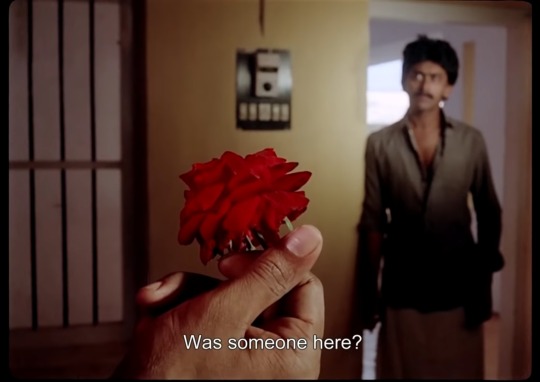
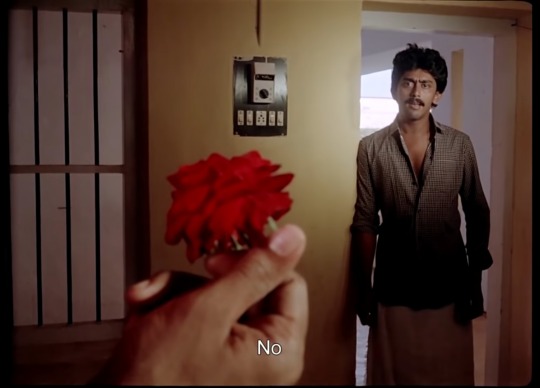
Anantaram / Monologue (1987)
dir. Adoor Gopalakrishnan
6 notes
·
View notes
Photo
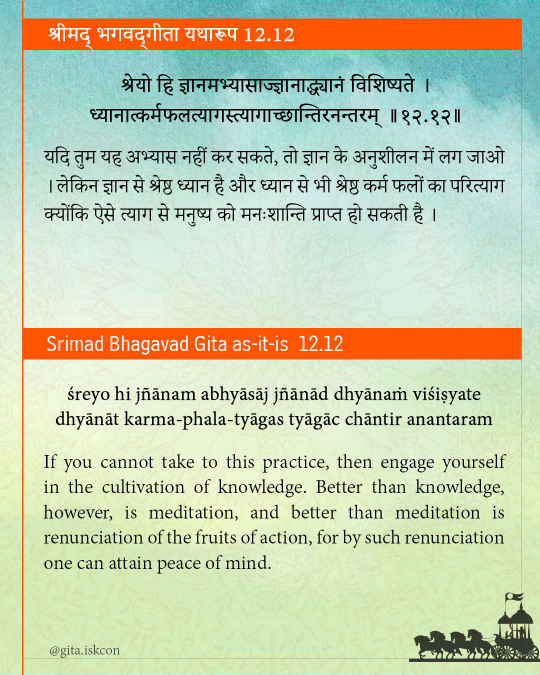
श्रीमद् भगवद्गीता यथारूप 12.12 श्रेयो हि ज्ञानमभ्यासाज्ज्ञानाद्ध्यानं विशिष्यते । ध्यानात्कर्मफलत्यागस्त्यागाच्छान्तिरनन्तरम् ॥ १२.१२ ॥ TRANSLATION यदि तुम यह अभ्यास नहीं कर सकते, तो ज्ञान के अनुशीलन में लग जाओ । लेकिन ज्ञान से श्रेष्ठ ध्यान है और ध्यान से भी श्रेष्ठ कर्म फलों का परित्याग क्योंकि ऐसे त्याग से मनुष्य को मनःशान्ति प्राप्त हो सकती है । PURPORT जैसा कि पिछले श्लोकों में बताया गया है, भक्ति के दो प्रकार हैं - विधि-विधानों से पूर्ण तथा भगवत्प्रेम की आसक्ति से पूर्ण । किन्तु जो लोग कृष्णभावनामृत के नियमों का पालन नहीं कर सकते, उनके लिए ज्ञान का अनुशीलन करना श्रेष्ठ है, क्योंकि ज्ञान से मनुष्य अपनी वास्तविक स्थिति को समझने में समर्थ होता है । यही ज्ञान क्रमशः ध्यान तक पहुँचाने वाला है, और ध्यान से क्रमशः परमेश्र्वर को समझा जा सकता है । ऐसी भी विधियाँ हैं जिनमे मनुष्य अपने को परब्रह्म मान बैठता है, और यदि कोई भक्ति करने में असमर्थ है, तो ऐसा ध्यान भी अच्छा है । यदि कोई इस प्रकार से ध्यान नहीं कर सकता, तो वैदिक साहित्य में ब्राह्मणों, क्षत्रियों, विषयों तथा शूद्रों के लिए कतिपय कर्तव्यों का आदेश है, जिसे हम भगवद्गीता के अंतिम अध्याय में देखेंगे । लेकिन प्रत्येक दशा में मनुष्य को अपने कर्मपजल का त्याग करना होगा - जिसका अर्थ है कर्मफल को किसी अच्छे कार्य में लगाना । संक्षेपतः, सर्वोच्च लक्ष्य, भगवान् तक पहुँचने की दो विधियाँ है - एक विधि है क्रमिक विकास की और दूसरी प्रत्यक्ष विधि । कृष्णभावनामृत में भक्ति प्रत्यक्ष विधि है । अन्य विधि में कर्मों के फल का त्याग करना होता है, तभी मनुष्य ज्ञान की अवस्था को प्राप्त होता है । उसके बाद ध्यान की अवस्था तथा फिर परमात्मा के बोध की अवस्था और अन्त में भगवान् की अवस्था आ जाती है । मनुष्य चाहे तो एक एक पग करके आगे बढ़ने की विधि अपना सकता है, या प्रत्यक्ष विधि ग्रहण कर सकता है । लेकिन प्रत्यक्ष विधि हर एक के लिए संभव नहीं है । अतः अप्रत्यक्ष विधि भी अच्छी है । यह तो उन लोगों के लिए है, जो इस अवस्था को प्राप्त नहीं हैं । उनके लिए तो त्याग, ज्ञान, ध्यान तथा परमात्मा एवं ब्रह्म की अनुभूति ही पालनीय है । लेकिन जहाँ तक भगवद्गीता का सम्बन्ध है, उसमें तो प्रत्यक्ष विधि पर ही बल है । प्रत्येक व्यक्ति को प्रत्यक्ष विधि ग्रहण करने तथा भगवान् श्रीकृष्ण की शरण में ��ाने की सलाह दी जाती है । ----- Srimad Bhagavad Gita As It Is 12.12 śreyo hi jñānam abhyāsāj jñānād dhyānaṁ viśiṣyate dhyānāt karma-phala-tyāgas tyāgāc chāntir anantaram TRANSLATION If you cannot take to this practice, then engage yourself in the cultivation of knowledge. Better than knowledge, however, is meditation, and better than meditation is renunciation of the fruits of action, for by such renunciation one can attain peace of mind. PURPORT As mentioned in the previous verses, there are two kinds of devotional service: the way of regulative principles and the way of full attachment in love to the Supreme Personality of Godhead. For those who are actually not able to follow the principles of Kṛṣṇa consciousness it is better to cultivate knowledge, because by knowledge one can be able to understand his real position. Gradually knowledge will develop to the point of meditation. By meditation one can be able to understand the Supreme Personality of Godhead by a gradual process. In the cultivation of knowledge there are processes which make one understand that one himself is the Supreme, and that sort of meditation is preferred if one is unable to engage in devotional service. If one is not able to meditate in such a way, then there are prescribed duties, as enjoined in the Vedic literature, for the brāhmaṇas, kṣatriyas, vaiśyas and śūdras, which we shall find in the last chapter of Bhagavad-gītā. But in all cases, one should give up the result or fruits of labor; this means to employ the result of karma for some good cause. In summary, to reach the Supreme Personality of Godhead, the highest goal, there are two processes: one process is by gradual development, and the other process is direct. Devotional service in Kṛṣṇa consciousness is the direct method, and the other method involves renouncing the fruits of one’s activities. Then one can come to the stage of knowledge, then to the stage of meditation, then to the stage of understanding the Supersoul, and then to the stage of the Supreme Personality of Godhead. One may take either the step-by-step process or the direct path. The direct process is not possible for everyone; therefore the indirect process is also good. It is, however, to be understood that the indirect process is not recommended for Arjuna, because he is already at the stage of loving devotional service to the Supreme Lord. It is for others, who are not at this stage; for them the gradual process of renunciation, knowledge, meditation and realization of the Supersoul and Brahman should be followed. But as far as Bhagavad-gītā is concerned, it is the direct method that is stressed. Everyone is advised to take to the direct method and surrender unto the Supreme Personality of Godhead, Kṛṣṇa. -----
3 notes
·
View notes
Photo

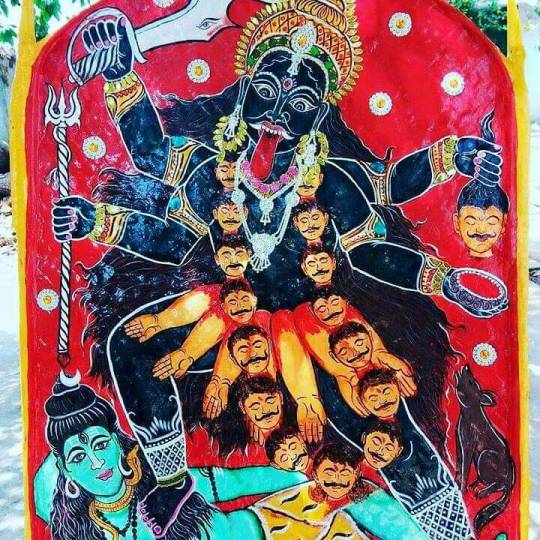

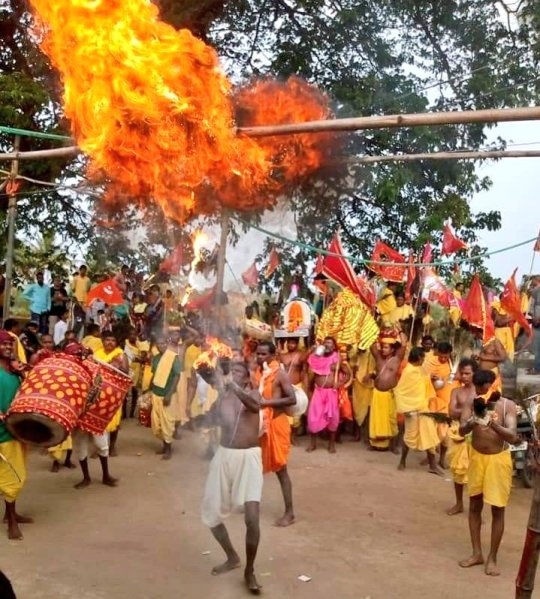
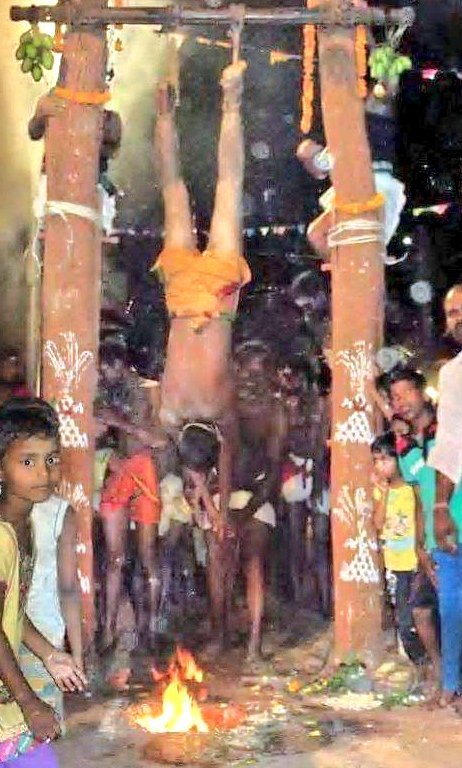
Danda Nata - The festival of hard penance, Odisha
Conversation @Gajapati (ଗଜପତି) wrote :
The festival of hard penance started in southern odisha on Thursday in strictly following covid guideline.
Danda Jatra is one of the most important traditional dance festival organized in the month of phalguna-chaitra
The participants of danda called "danduaa".Or bhuktas , pray to goddess Kali and Siva. Only male persons can take part in this festival.
During the period they stay away from home like family , near and dear ones. They take food once a day for total 1month time period . Though the penace has several restrictions and rituals, there is no bar on caste.
The Danduaas performs three type of danda. Those phases are
Dhuli danda
Agni Danda
Pani Danda
Historians Trace it's origin to 8th-9th CE during inception of Tantrism after the decadence of Buddhism.
"Abhinaba chandrika" a literary works of 1568, mentions the prevalence of danda nata.
Source : Dr Anantaram kara, bhismagiri
(via Twitter: Conversation @Gajapati (ଗଜପତି))
57 notes
·
View notes
Text
Anantaram PinCode (Post Code)
Anantaram Pin Code is 500101. Pin Code is other name as Zip Code or Postal Code. Anantaram is located in district Hyderabad, TELANGANA, INDIA.
PIN Code (Zip Code) 500101 Post Office Anantaram Town/Taluk Tirumalagiri District Hyderabad State TELANGANA
Anantaram Pin Code location and Details
Location Tirumalagiri Taluk of Hyderabad District Office Type B.O Delivery Related Sub Office Shamirpet S.O Contact Details NA Address 500101, Anantaram, Hyderabad, TELANGANA, INDIA Longitude 78.5469197 Latitude 17.6041626
0 notes
Photo
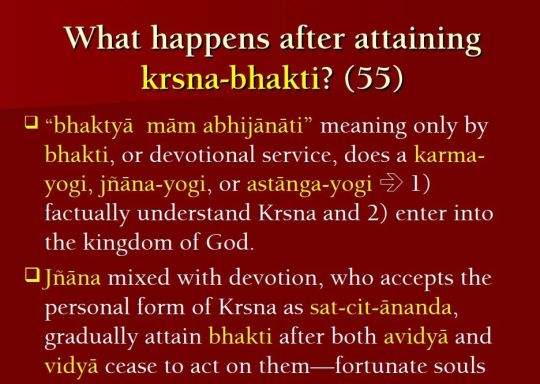
भक्त्या मामभिजानाति यावान्यश्चास्मि तत्त्वतः । ततो मां तत्त्वतो ज्ञात्वा विशते तदनन्तरम् ॥५५॥ bhaktyā mām abhijānāti yāvān yaś cāsmi tattvataḥ tato māṁ tattvato jñātvā viśate tad-anantaram One can understand the Supreme Personality as He is only by devotional service. And when one is in full consciousness of the Supreme Lord by such devotion, he can enter into the kingdom of God. Plate 60 - Chapter 18 - Jnana-yoga ---Conclusion - Perfection of Renunciation - Section E - From jnana-yoga to pure devotional service 7 The Supreme Personality of Godhead, Kṛṣṇa, and His plenary portions cannot be understood by mental speculation nor by the nondevotees. If anyone wants to understand the Supreme Personality of Godhead, he has to take to pure devotional service under the guidance of a pure devotee. Otherwise, the truth of the Supreme Personality of Godhead will always be hidden. It is already stated (nāhaṁ prakāśaḥ) that He is not revealed to everyone. Everyone cannot understand God simply by erudite scholarship or mental speculation. Only one who is actually engaged in Kṛṣṇa consciousness and devotional service can understand what Kṛṣṇa is. University degrees are not helpful. One who is fully conversant with the Kṛṣṇa science becomes eligible to enter into the spiritual kingdom, the abode of Kṛṣṇa. Becoming Brahman does not mean that one loses his identity. Devotional service is there, and as long as devotional service exists, there must be God, the devotee, and the process of devotional service. Such knowledge is never vanquished, even after liberation. Liberation involves getting free from the concept of material life; in spiritual life the same distinction is there, the same individuality is there, but in pure Kṛṣṇa consciousness. One should not misunderstand that the word viśate, "enters into Me," supports the monist theory that one becomes homogeneous with the impersonal Brahman. No. Viśate means that one can enter into the abode of the Supreme Lord in his individuality to engage in His association and render service unto Him. For instance, a green bird enters a green tree not to become one with the tree but to enjoy the fruits of the tree. https://www.instagram.com/p/CenQHjdMBrO/?igshid=NGJjMDIxMWI=
0 notes
Photo
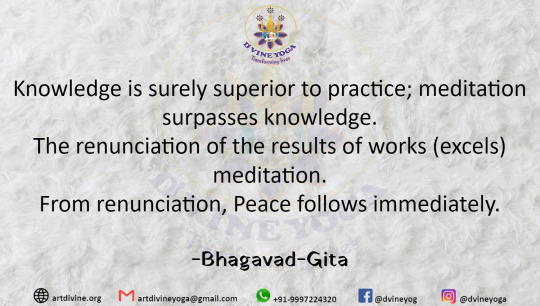
𝐓𝐡𝐞 𝐒𝐞𝐜𝐫𝐞𝐭 𝐨𝐟 𝐤𝐞𝐞𝐩𝐢𝐧𝐠 𝐭𝐡𝐞 𝐦𝐢𝐧𝐝 𝐂𝐚𝐥𝐦 𝐚𝐧𝐝 𝐒𝐭𝐢𝐥𝐥
श्रेयो हि ज्ञानमभ्यासाज्ज्ञानाद्ध्यानं विशिष्यते |ध्यानात्कर्मफलत्यागस्त्यागाच्छान्तिरनन्तरम् ॥12॥
śhreyo hi jñānam abhyāsāj jñānād dhyānaṁ viśhiṣhyatedhyānāt karma-phala-tyāgas tyāgāch chhāntir anantaram
Knowledge is surely superior to practice; meditation surpasses knowledge. The renunciation of the results of works (excels) meditation. From renunciation, Peace follows immediately.
-Bhagavad-Gita
Chapter 12, Verse 12
D’VINE YOGA SCHOOL
0 notes
Photo

Bhagavad Gita: Chapter 18, Verse 55 भक्त्या मामभिजानाति यावान्यश्चास्मि तत्वत: | ततो मां तत्वतो ज्ञात्वा विशते तदनन्तरम् || 55|| bhaktyā mām abhijānāti yāvān yaśh chāsmi tattvataḥ tato māṁ tattvato jñātvā viśhate tad-anantaram bhaktyā—by loving devotion; mām—me; abhijānāti—one comes to know; yāvān—as much as; yaḥ cha asmi—as I am; tattvataḥ—in truth; tataḥ—then; mām—me; tattvataḥ—in truth; jñātvā—having known; viśhate—enters; tat-anantaram—thereafter Translation BG 18.55: Only by loving devotion to me does one come to know who I am in truth. Then, having come to know me, my devotee enters into full consciousness of me.
- http://moby.to/arxd2a
0 notes
Text
Death of a Historic River
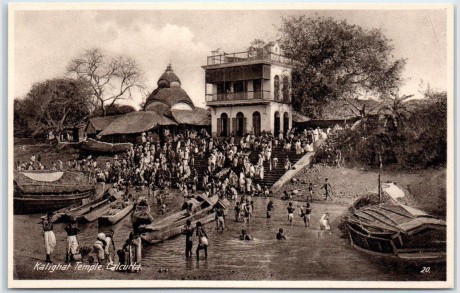
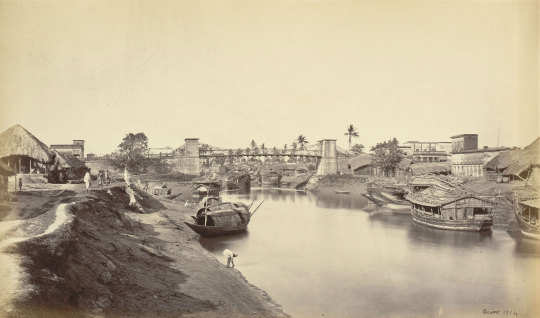

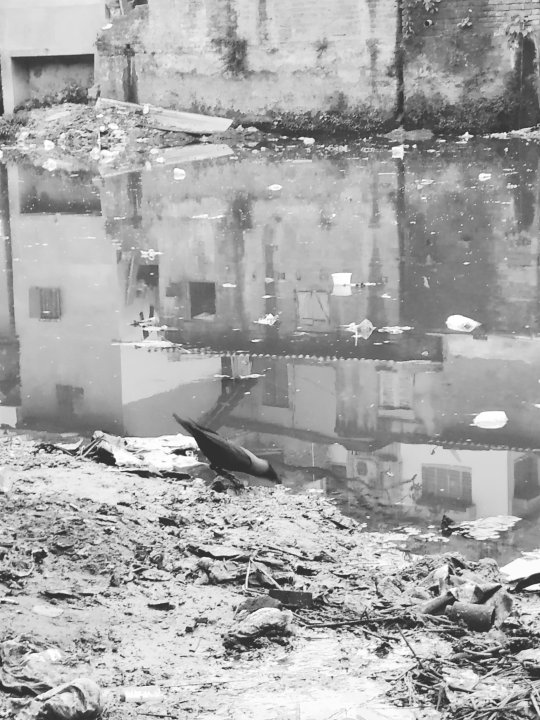
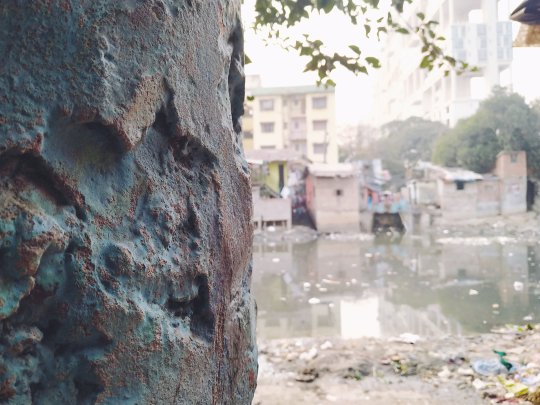
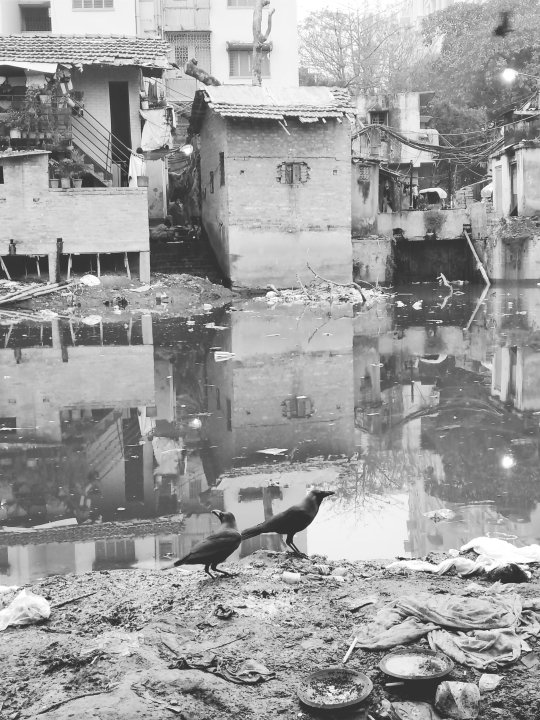
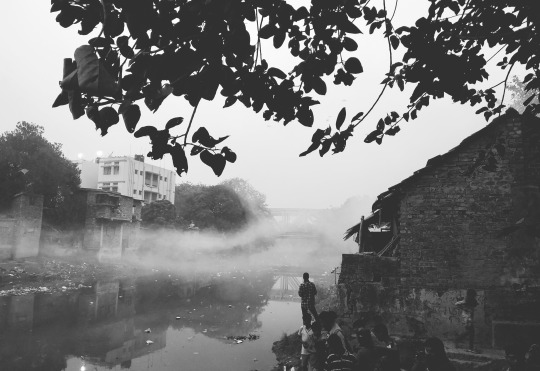
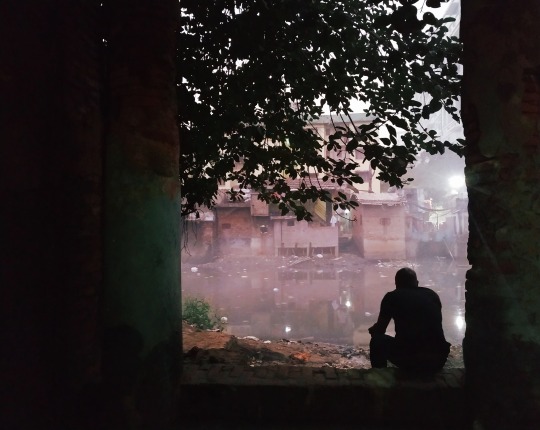
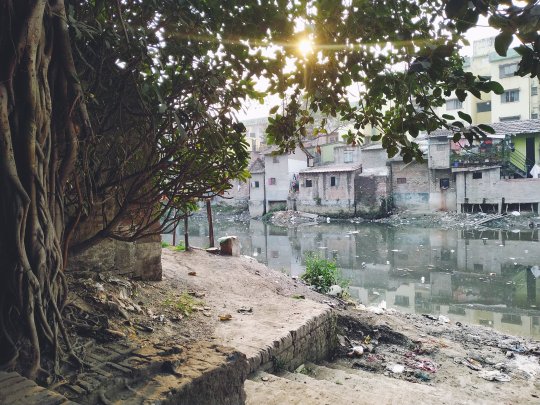
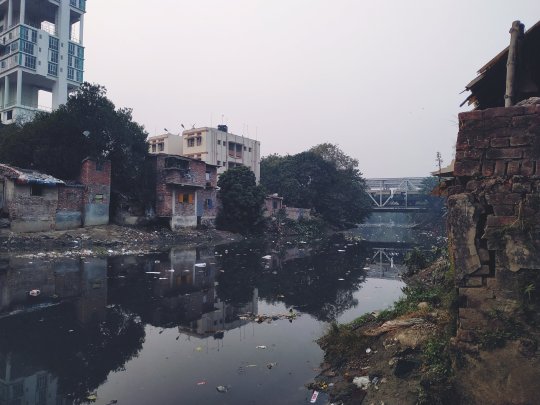
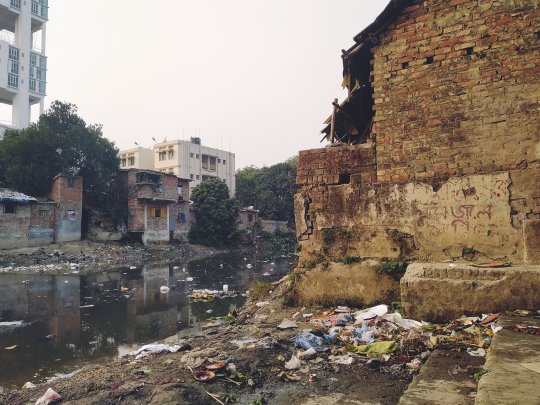

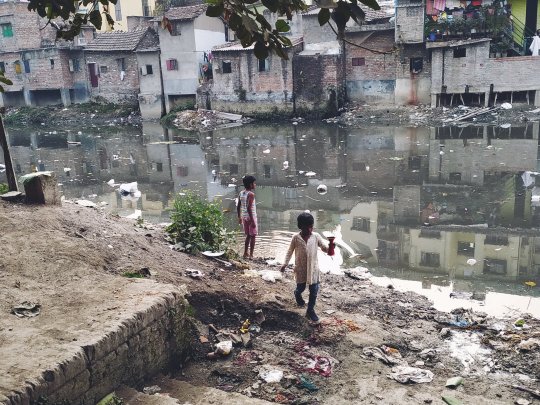
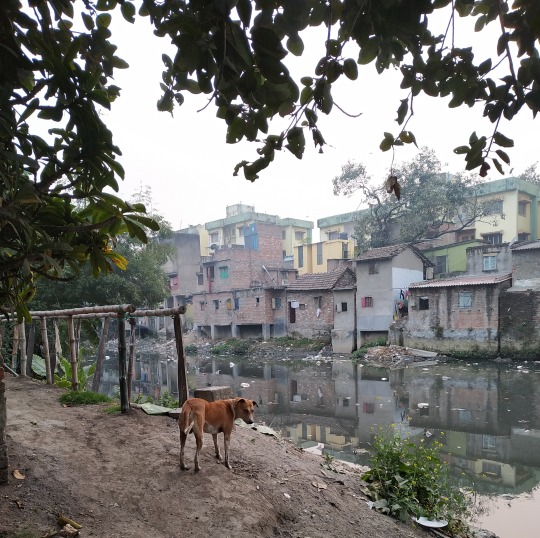
Cities and civilisations flourished on the banks of rivers, rivulets, canals and creeks—popularly known as “riverine ecology.” Holwell (1771) noted that ‘a small brook’ near Kalighat ‘was deemed to be the original course of the Ganges’ by the local Brahmins. By 1771, however, Adi Ganga had shrunk and in the surveyor Ranell’s map it is only a faint line. This channel was shown to be draining into the Bidyadhari (upper Matla) below Baruipur in the 1778 Bengal Atlas of James Rennell (Sheet no. 1). The initial written accounts of its moribund course, described in the early maps variously as the Govindapur Creek, Gunga Nullah, Surman’s Nala etc., were provided by the Calcutta Review (1852) and Sherwill (1858). Subsequently Hunter (1875) identified it as the Adi Ganga and observed how ‘the Hindus consider the route of the channel sacred and burn their dead on the sides of the tanks dug in its bed.’ During 1775-77, a connection was made by Maj. Willaim Tolly between the Hooghly and Bidyadhari by means of a 27 km long canal which mostly followed the Adi Ganga in its western section upto Gariya (Buckley, 1883). After the death of Major Tolly, Mrs Tolly was given the right to levy tolls and it was taken over by the government in 1804. Apart from playing a huge role in trade and transportation, the canal acted as an outlet for waste water of the city. It is interesting to note that the water-borne traffic (including Tolly’s Canal and other canals) to Calcutta was seven times more than what was carried by the Eastern Bengal State Railway during the 19th and early 20th century (O’Malley 1998). Once the Adi Ganga was revitalised by William Tolly, a number of ghats grew up on the banks of the canal including Balaram Basu’s Ghat, Mukherjee’s Ghat, Hindu Mission Ghat, Kalighat, Ghatak Ghat, Prasannamayi’s Ghat, Rashbarir Ghat, Tarpan Ghat, Kudghat, Rathtala Ghat, etc. The tract was a lively route and the locals are still nostalgic about how Bhatiali(boatman songs) was sung under the full moon sky providing an intense satiety to people living on its banks. But gradually since the 1960s the water route lost its vigour though it still continued to be a discharging outlet for the southern part of the city. The once navigable canal transformed into a mere nullah (drain) due to lack of restoration and maintenance.
A number of Mangalkavyas described the Adi Ganga course of the Bhagirathi as a principal navigational channel to the Bay of Bengal. The temple of Lakhindar still stands in Boral burning ghat. Two old maps can be found in the National Library, Kolkata. One by the Portuguese, Jao de-Barros, dated back to 1550, and the other by the Dutchman, Van Den Brock was of 1562 vintage. In both maps Adi Ganga was about 3 km wide, and Portuguese pirates used this route to plunder and pillage south Bengal. Pratapaditya held sway over this region. His general, Madan Malla, used to confront these pirates.
The strand of Adi Ganga was known as Jangal and it was down this path that Sri Chaitanya along with four companions trudged from Nabadwip to Puri. According to Chaitanya Bhagabat, when he reached Atisara village (now Baruipur) he spent the night (14th Falgun, 1510) singing kirtan in the hut of Sadhu Anantaram. This tradition of singing kirtan continues in Baruipur for 500 years. A temple has come up on this spot. Even in the early 1970s, honey gatherers from the Sundarbans brought honey and bamboo up the river in their boats, and tied up below the bridge that leads to Tollygunge.
The derelict condition of this important water channel can be partly attributed to the fact that Calcutta’s canals were excavated for two reasons—trade-transportation and drainage-sewerage-sanitation.
Though it was properly maintained during the colonial period (due to its important role in riverine ecology), in the post-independence period it turned into a sewer because the water channel was neither restored, nor maintained. Huge amount of silt was deposited when the heavy silt laden water of the Hooghly River entered the canal especially during high tides resulting in the increase in the bed level at alarming proportions ranging between 6 and 12 feet.
A large number of sewerage drains belonging to the Calcutta Municipal Corporation (CMC) and the Calcutta Metropolitan Water and Sanitation Authority (CMWSA) discharged untreated effluent directly into Tolly’s Canal. These networks did not have lock gates to check and regulate the flow of water during high and low tides. The canal carried effluent from the southern part of the city and discharged it in the eastern marshlands (later called the East Kolkata Wetlands). It was also polluted by household garbage from local residents.
Over a period of time, several “illegal” settlements grew up on both banks of the entire stretch of the Tolly’s Canal. The settlers were mostly from different areas of rural West Bengal who migrated to Kolkata thinking of the opportunities of work that the city would have provided. For 40 years the canal bank was occupied with people who were already victims of development from the countryside facing landlessness, alienation of land, poverty and flood (Seabrook 2002).
Time and again there had been plans promises to turn Kolkata into Venice by reviving her inland water transport. But till date there is no such initiative. Kolkata may be an “ecologically subsidized” city (Ghosh 1997); but the way we have ignored our ecosystems, especially water bodies, is making the “delta city” more vulnerable to environmental changes. Environmental activist Subhas Datta says, “It’s a major scam, it’s a story of systematically murdering the river with encroachment, effluent discharge and all kind of possible degradation, under the obvious patronage of political powers.” Pollution control board data shows the dissolved oxygen level along most stretches of the Adi Ganga is zero, so no life can exist in it. The coliform bacteria count is between nine and 16 million per 100 millilitres of water. The national standard for water fit for bathing is 500 per 100 ml. Apart from the garbage, 57 drains containing untreated waste water flow into the Adi Ganga.
My recent visit to the Rashbarir Ghat showed me again how much plastics and waste we put into this historical river which once played an important role in trading Muslin, Indigo and many other products.Spend some time along this river and you might be able to hear its sobbing.
0 notes
Text
Time to Learn!
02 Qualifications and disqualifications for understanding and chanting the holy name Hare Krishna Japa / ISKCON Desire Tree / 1 day ago Only the devotee can understand the transcendental nature of Krsna's name: [The demigods to Lord Krsna in the womb of DevaKi]: O Lord, Your transcendental name and form are not ascertained by those who merely speculate on the path of imagination. Your name, form and attributes can be ascertained only through devotional service. As stated in the Padma Purana: atah sri−Krsna−namadi na bhaved grahyam indriyaih sevonmuKhe hi jihvadau svayam eva sphuraty adah "No one can understand the transcendental nature of the name, form, quality and pastimes of Sri Krsna through his materially contaminated senses. Only when one becomes spiritually saturated by transcendental service to the Lord are the transcendental name, form, quality and pastimes of the Lord revealed to him." (BhaKti−rasamrta−sindhu 1.2.234)1.2.234] "One cannot understand the transcendental nature of the name, form, quality and pastimes of Sri Krsna through one's materially contaminated senses. Only when one becomes spiritually saturated by transcendental service to the Lord are the transcendental name, form, quality and pastimes of the Lord revealed to him." Since Krsna and His transcendental name, form and activities are all of a transcendental nature, ordinary persons or those who are only slightly advanced cannot understand them. Even big scholars who are nondevotees thinK that Krishna is fictitious. Yet although so-called scholars and commentators do not believe that Krishna was factually a historical person whose presence on the Battlefield of KuruKshetra is recorded in the history of Mahabharata, they feel compelled to write commentaries on Bhagavad-gita and other historical records. SevonmuKhe hi jihvadau sveyam eva sphuraty adah: Krsna's transcendental name, form, attributes and activities can be revealed only when one engages in His service in full consciousness. This confirms Krsna's own words in Bhagavad−gita (18.55): bhaKtya mam abhijanati yavan yas casmi tattvatah tato mam tattvato jnatva visate tad−anantaram "One can understand the Supreme Personality of Godhead as He is only by devotional service. And when one is in full consciousness of the Supreme Lord by such devotion, he can enter into the Kingdom of God." Only by sevonmuKha, by engaging oneself in the Lord's service, can one realize the name, form and qualities of the Supreme Personality of Godhead. The Lord is also Known as Giridhari or Girivara−dhari. Because Krsna, for the saKe of His devotees, lifted Govardhana Hill, the devotees appreciate the Lord's inconceivable strength; but nondevotees, in spite of directly perceiving the Lord's inconceivable strength and power, regard the Lord's activities as fictitious. This is the difference between a devotee and a nondevotee. Nondevotees cannot give any nomenclature for the Supreme Personality of Godhead, yet the Lord is Known as Syamasundara and Giridhari. Similarly, the Lord is Known as DevaKi−nandana and Yasoda−nandana because He accepted the role of son for mother DevaKi and mother Yasoda, and He is Known as Gopala because He enjoyed the sport of maintaining the cows and calves. Therefore, although He has no mundane name, He is addressed by devotees as DevaKi−nandana, Yasoda−nandana, Gopala and Syamasundara. These are all transcendental names that only devotees can appreciate and nondevotees cannot. – Srimad Bhagavatam 10.2.36
1 note
·
View note